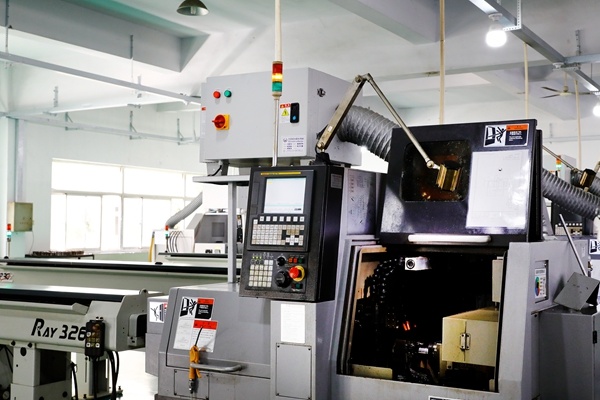Exploring Tolerance and Finish in Stainless Steel CNC Machining Parts: A Comprehensive Guide
Release Time:
Jun 05,2025
Exploring Tolerance and Finish in Stainless Steel CNC Machining Parts Table of Contents 1. Introduction to Stainless Steel CNC Machining 2. Importance of Tolerance in CNC Machining 2.1 Understanding Tolerance Levels 2.2 Types of Tolerances in CNC Machining 3. Surface Finish: Why It Matters 3.1 Different Types of Surface Finishes 3.2 How Surface Finish Affects Functionality 4. The Relationship Betw
Exploring Tolerance and Finish in Stainless Steel CNC Machining Parts
Table of Contents
1. Introduction to Stainless Steel CNC Machining
2. Importance of Tolerance in CNC Machining
2.1 Understanding Tolerance Levels
2.2 Types of Tolerances in CNC Machining
3. Surface Finish: Why It Matters
3.1 Different Types of Surface Finishes
3.2 How Surface Finish Affects Functionality
4. The Relationship Between Tolerance and Surface Finish
5. Key Factors Influencing Tolerance and Finish
5.1 Material Selection
5.2 CNC Machining Techniques
5.3 Post-Processing Considerations
6. Best Practices for Achieving Optimal Tolerance and Finish
7. Frequently Asked Questions (FAQs)
8. Conclusion
1. Introduction to Stainless Steel CNC Machining
The world of CNC machining has revolutionized manufacturing across various industries. When it comes to **stainless steel**, the challenges and opportunities presented by this versatile material become even more pronounced. Stainless steel is renowned for its strength, corrosion resistance, and aesthetic appeal, making it a prime choice for numerous applications, from automotive to medical equipment.
CNC machining involves the use of computer-controlled tools to create precise components from raw materials. This method allows for high accuracy, efficiency, and repeatability, essential qualities when working with stainless steel. In this article, we will explore the critical aspects of **tolerance** and **surface finish**, both of which play a significant role in the performance and longevity of CNC machined parts.
2. Importance of Tolerance in CNC Machining
Understanding tolerances is crucial for any manufacturing process. Tolerances define the allowable limits of variation in a part's dimensions, ensuring that components fit and function correctly within an assembly.
2.1 Understanding Tolerance Levels
Tolerance levels can be classified broadly into two categories: **absolute tolerances** and **relative tolerances**. Absolute tolerances specify the exact permissible deviation from a standard dimension, while relative tolerances are expressed as a fraction of the dimension itself. For instance, a tolerance of ±0.01 mm on a 10 mm part would be considered a relative tolerance.
Achieving the desired tolerance is critical to the part's functionality. For instance, components used in high-precision applications, such as aerospace or medical devices, typically require tighter tolerances to ensure safety and performance.
2.2 Types of Tolerances in CNC Machining
Several types of tolerances are commonly utilized in CNC machining:
- **Geometric Dimensioning and Tolerancing (GD&T):** This is a system that defines engineering tolerances using symbols, which allows for clear communication of the exact requirements for complex shapes.
- **Linear Tolerances:** These specify allowable variations in the length or width of a part.
- **Angular Tolerances:** These are used for parts that have specific angle requirements, such as fittings or brackets.
Understanding and applying the correct types of tolerances is vital in ensuring that the components produced meet functional requirements.
3. Surface Finish: Why It Matters
The surface finish of a machined part is not merely a matter of aesthetics; it significantly impacts functionality, performance, and durability.
3.1 Different Types of Surface Finishes
Surface finishes can vary widely, and the choice of finish depends on the application requirements. Common types include:
- **Machined Finish:** Achieved directly from the machining process, this finish has inherent tool marks and may require additional processing for improved performance.
- **Polished Finish:** This finish is achieved through polishing techniques, resulting in a smooth and reflective surface that minimizes friction.
- **Anodized Finish:** Often used for aluminum parts, this finish enhances corrosion resistance and surface durability.
Each of these finishes serves a different purpose and can affect the performance of the final product.
3.2 How Surface Finish Affects Functionality
The surface finish affects several characteristics of a part, including:
- **Friction and Wear Resistance:** A smoother surface reduces friction, leading to longer service life.
- **Corrosion Resistance:** Certain finishes enhance the material's ability to resist oxidation and corrosion.
- **Aesthetic Appeal:** In consumer products, the visual aspect can significantly impact marketability.
Selecting the correct surface finish is essential to ensure that the parts not only perform well but also meet the expectations of end-users.
4. The Relationship Between Tolerance and Surface Finish
The interplay between tolerance and surface finish is significant. A part that meets its dimensional tolerances but has poor surface finish may result in malfunctions or reduced lifespan. Conversely, a part with an excellent finish may not perform adequately if its dimensions fall outside acceptable tolerance ranges.
Therefore, striking the right balance between achieving desired tolerances and maintaining a suitable surface finish is essential for successful CNC machining.
5. Key Factors Influencing Tolerance and Finish
Several factors can directly influence the tolerances and finishes achieved in stainless steel CNC machining:
5.1 Material Selection
The choice of stainless steel grade fundamentally impacts the machinability and, consequently, the achievable tolerances and finishes. For example, austenitic stainless steels are generally easier to machine compared to martensitic grades.
5.2 CNC Machining Techniques
Different CNC machining techniques, from milling to turning, offer varying levels of precision and surface finish capabilities. Understanding each technique's strengths and limitations allows for better decision-making during the design phase.
5.3 Post-Processing Considerations
Many finishes are achieved through post-processing techniques such as grinding, bead blasting, or chemical treatments. Each of these methods can enhance the surface finish but may also require careful planning to ensure that tolerances are maintained.
6. Best Practices for Achieving Optimal Tolerance and Finish
To optimize CNC machining processes for stainless steel parts, consider the following best practices:
- **Design for Manufacturability (DFM):** Involve machining considerations during the design phase to ensure that tolerances and finishes can be realistically achieved.
- **Use of High-Quality Tooling:** The choice of cutting tools can significantly impact surface finish and tolerance. High-quality, sharp tools typically yield better results.
- **Regular Maintenance of CNC Machines:** Keeping machinery in excellent condition minimizes deviations caused by wear and tear, leading to more consistent output.
By adhering to these practices, manufacturers can enhance both the quality and consistency of their CNC machined parts.
7. Frequently Asked Questions (FAQs)
What is the ideal surface finish for stainless steel CNC parts?
The ideal surface finish depends on the application. For aesthetic parts, a polished finish may be preferred, while functional components may require a machined finish for better performance.
How tight can tolerances be in CNC machining?
Tolerances can vary widely, but with advanced CNC technology, tolerances as tight as ±0.001 mm are achievable for high-precision applications.
Does surface finish impact the cost of CNC machining?
Yes, achieving finer finishes often requires additional processes and time, which can increase the overall cost of machining.
Can I specify different tolerances for different parts of the same component?
Yes, it is common to specify different tolerances for various features of the same component, depending on their functional requirements.
How does post-processing improve surface finish?
Post-processing techniques such as grinding, polishing, or chemical treatments can remove imperfections and enhance the smoothness of the surface, contributing to better performance and aesthetics.
8. Conclusion
In summary, understanding the intricacies of tolerance and surface finish in stainless steel CNC machining is vital for producing high-quality components that meet the demands of various applications. By carefully considering the relationship between these two factors and implementing best practices throughout the design and manufacturing process, manufacturers can achieve optimal results.
Achieving the right balance between tolerance and finish not only enhances the functionality and durability of parts but also contributes to overall customer satisfaction. As we continue to innovate and improve CNC machining techniques, the importance of these factors will only grow, pushing the boundaries of what is possible in the world of manufacturing.




